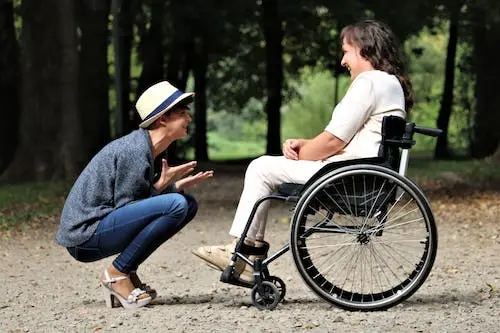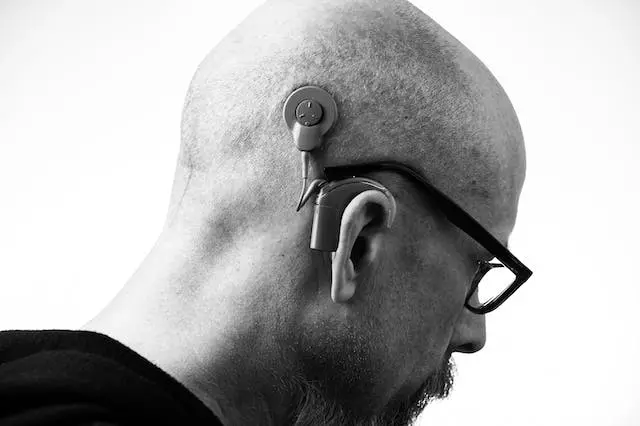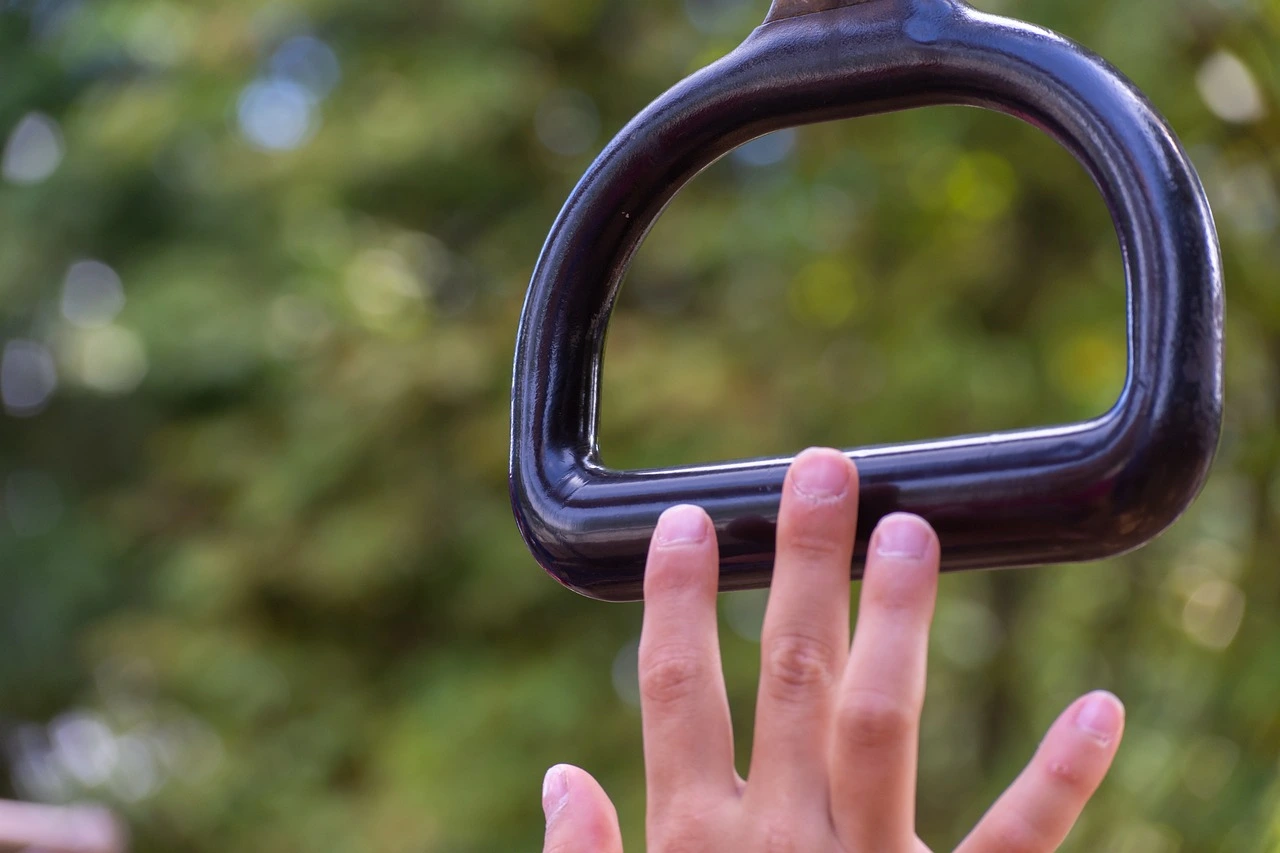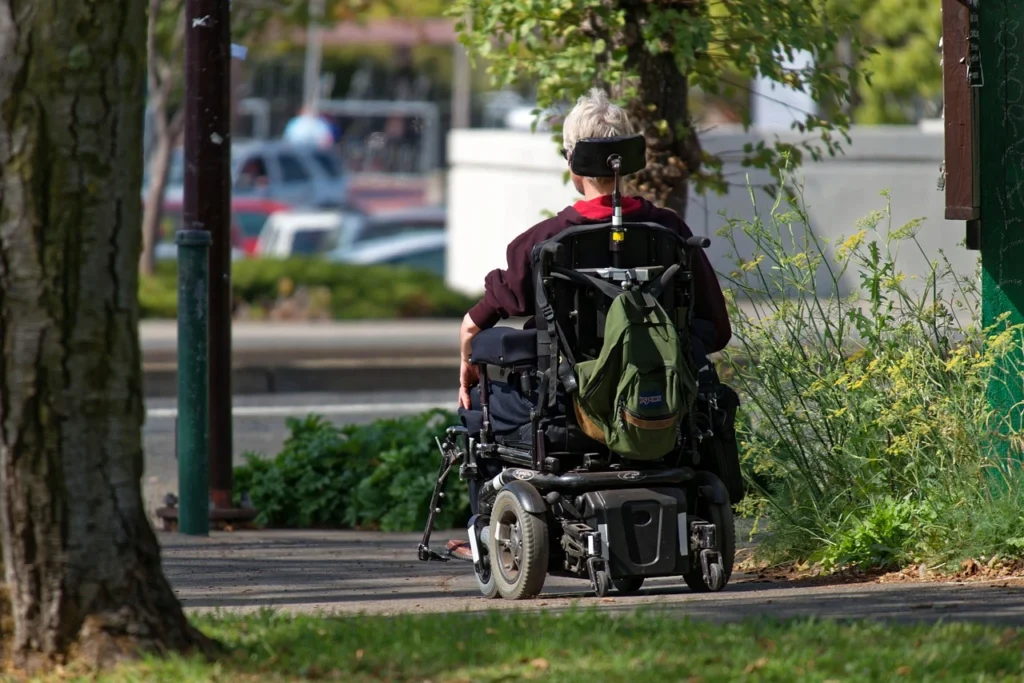10 Assistive Devices for Elderly: Enhancing Independence

- Introduction to Assistive Devices for Elderly
- Importance of Assistive Devices for the Elderly
- Top 10 Assistive Devices For Elderly
- Factors to Consider When Choosing Assistive Devices for the Elderly
- Resources and Support for Elderly Individuals and Their Caregivers
- Recap of the Top 10 Assistive Devices for Elderly
- Conclusion
- Frequently Asked Questions (FAQs)
Introduction to Assistive Devices for Elderly
This post may contain affiliate links, meaning I may earn a commission if you make a purchase, at no extra cost to you. I only recommend products I trust. Thank you for your support.
Assistive devices for elderly are tools and equipment designed to aid seniors in maintaining their independence and improving their quality of life.
These devices cater to specific needs such as mobility, communication, medication management, cognitive assistance, and safety, empowering seniors to overcome challenges.
This article will explore the top 10 assistive devices for the elderly, highlighting their importance and benefits in enhancing independence and quality of life, so continue reading to the end.
Importance of Assistive Devices for the Elderly
Assistive devices for elderly play a crucial role in supporting the seniors by addressing their specific needs.
These devices offer numerous benefits, including:
- Increased mobility and independence: Assistive devices for elderly such as mobility aids enable seniors to move around safely and confidently, reducing the risk of falls and promoting an active lifestyle.
- Improved communication: Hearing amplifiers and communication devices cater to individuals with hearing impairments or speech difficulties, ensuring effective communication with loved ones and healthcare providers.
- Medication management: With medication management devices, seniors can easily organize and remember to take their medications, reducing the risk of medication errors and improving adherence.
- Cognitive assistance: Cognitive assistance tools, such as memory aids and smart home systems, help seniors with cognitive impairments maintain their daily routines and enhance their memory and cognitive functions.
- Enhanced comfort and well-being: Orthopedic pillows and cushions provide support and alleviate pain, while smart home technologies offer convenience and control over various home functions.
- Visual assistance: Digital magnifiers aid individuals with visual impairments by providing magnification for reading and viewing images.
- Safety and accessibility: Grab bars, handrails, and smart wearables ensure seniors’ safety by providing stability and quick access to assistance when needed.
Top 10 Assistive Devices For Elderly
These 10 assistive devices for elderly aim to enhance their daily living, foster independence and well-being with a focus on their specific and unique needs.
1. Walking Aids for Seniors
Walking aids or mobility aids are essential for seniors who require assistance with mobility. These assistive devices for elderly offer stability and support, reducing the risk of falls and promoting independence.
The following are examples of walking aids for seniors:
- Walker: Walkers are sturdy mobility aids that provide stability for individuals with balance issues or weakness in their legs. They typically have four legs and may feature wheels for easier maneuverability. Walkers can be adjusted to the user’s height and often come with hand grips for added support.
- Cane: Canes are lightweight and portable walking aids that assist in maintaining balance and reducing the risk of falls. They come in various styles, such as single-point canes and quad canes, and can be customized to fit the user’s height.
- Wheelchair: Wheelchairs offer mobility for seniors with limited walking ability. They come in manual and electric variants, providing independence and freedom of movement. Wheelchairs can be self-propelled or pushed by a caregiver.

2. Hearing Amplifiers for Elderly
Hearing amplifiers are designed to enhance auditory experiences for individuals with hearing impairments. They ensure effective communication and participation in daily activities.
The following are examples of hearing amplifiers for the elderly:
- Hearing Aids for Elderly: Hearing aids for elderly are small electronic devices worn behind or inside the ear. They amplify sounds and improve hearing for individuals with mild to severe hearing loss. Hearing aids are available in various styles, including behind-the-ear (BTE), in-the-ear (ITE), and completely-in-the-canal (CIC).
- Personal Sound Amplifiers: Personal sound amplifiers are portable devices that amplify specific sounds for improved hearing. They are suitable for individuals with mild hearing loss or those who require occasional amplification in specific situations, such as watching TV or attending social events.
3. Medication Management Assistive Devices
Medication management can be challenging for elderly individuals who need to take multiple medications on a regular basis.
Fortunately, there are medication assistive devices available from TabTime Medelert, Hero and MedMinder to simplify this process.
The following are examples of medication management devices:
- Automated Pill Dispensers: Automated pill dispensers organize and dispense medications according to a pre-set schedule. They often come with built-in alarms or reminders to ensure timely medication intake. Some automated pill dispensers can be programmed to notify caregivers or healthcare providers in case of missed doses.
- Medication Reminder Apps: Medication reminder apps are smartphone applications that send notifications and reminders for medication intake. These apps can be customized to accommodate different medication schedules and dosage instructions. They may also provide additional features such as medication tracking and refill reminders.
4. Communication Assistive Devices
Effective communication is vital for the well-being and social interaction of elderly individuals. Communication assistive devices cater to seniors with hearing difficulties or speech impairments, enabling them to connect with others.
The following are examples of communication devices:
- Amplified Phones: Amplified phones increase the volume of incoming and outgoing calls, making it easier for individuals with hearing difficulties to communicate over the phone. These phones often have adjustable amplification levels, tone control, and extra-loud ringers.
- Tablets with Communication Apps: Tablets equipped with communication apps facilitate communication through text or voice for those with speech impairments. These apps feature large buttons, customizable interfaces, and text-to-speech capabilities, allowing seniors to express themselves effectively.
5. Cognitive Assistive Devices
Cognitive impairments can significantly impact daily functioning and independence. Cognitive assistance tools help seniors with memory and cognitive difficulties by providing support and automating tasks.
These are examples of cognitive assistance tools:
- Memory Aids: Memory aids such as memory journals help seniors in recalling important information, appointments, and events. These journals often have prompts and sections to jot down notes, ensuring that essential details are not forgotten.
- Smart Home Systems with Voice Commands: Smart home systems integrated with voice commands aid in automating tasks for individuals with cognitive impairments. These systems can control lights, appliances, and security features through voice activation, reducing the need for manual operation and promoting independence.
6. Orthopedic Pillows and Cushions
Orthopedic pillows and cushions are designed to provide comfort, support, and pain relief for seniors with musculoskeletal issues. They promote healthy posture and alleviate discomfort while sitting or lying down.
Below are some examples of orthopedic pillows and cushions:
- Memory Foam Pillows: Memory foam pillows conform to the shape of the user’s head and neck, providing optimal support and alignment. They distribute pressure evenly, reducing the risk of neck and shoulder pain. Memory foam pillows also offer excellent temperature regulation and are hypoallergenic.
- Coccyx Cushions: Coccyx cushions are designed to relieve tailbone pain and promote comfort while sitting. They have a cut-out or contoured design that helps alleviate pressure on the coccyx, making them ideal for individuals with coccydynia or those who spend extended periods sitting.
7. Smart Home Technologies Assistive Devices
Smart home technologies enhance convenience, safety, and control over various aspects of daily living. They offer features that cater to the specific needs of elderly individuals.
Below are examples of smart home technologies:
- Smart Thermostats: Smart thermostats allow remote control and automation of temperature regulation within the home. They can be adjusted through mobile applications or voice commands, ensuring optimal comfort and energy efficiency.
- Voice-Activated Assistants (e.g., Amazon Echo, Google Home): Voice-activated assistants serve as virtual assistants, capable of performing tasks and answering questions through voice commands. They can control smart home devices, provide information, play music, set reminders, and much more.
8. Digital Magnifiers Assistive Devices
Digital magnifiers are valuable tools for individuals with visual impairments, allowing them to read small print and view images more easily. These devices offer magnification options to accommodate varying levels of visual acuity.
Examples of digital magnifiers include:
- Electronic Handheld Magnifiers: Electronic handheld magnifiers are portable devices that provide magnification for reading books, newspapers, and other printed materials. They often have adjustable magnification levels, contrast enhancement, and built-in lighting for improved visibility.
- Digital Magnifier Apps: Digital magnifier apps are available on tablets and smartphones, offering magnification for text and images. These apps utilize the device’s camera to capture and enlarge the desired content, providing an accessible way to read menus, labels, and other visual information.

9. Grab Bars and Handrails
Grab bars and handrails are essential safety features that provide stability and support for seniors, particularly in areas prone to slips and falls.
Examples of grab bars and handrails:
- Wall-Mounted Grab Bars: Wall-mounted grab bars are installed in bathrooms near toilets, showers, and bathtubs to offer stability and assistance during transfers and movements. They are made of durable materials and can support the weight of an individual, reducing the risk of accidents.
- Handrails along Staircases: Handrails along staircases ensure safe navigation by providing a secure grip and support. They are typically installed on both sides of the staircase, allowing individuals to maintain balance and stability while ascending or descending stairs.
10. Smart Wearables Assistive Devices
Smart wearables combine technological advancements with health monitoring and emergency response features, providing peace of mind and quick access to assistance for both seniors and their caregivers.
Examples of smart wearables:
- Health Monitoring Watches (e.g., Apple Watch, Fitbit): Health monitoring watches track vital signs and activities, including heart rate, sleep patterns, and physical movements. They provide real-time data and alerts, enabling seniors to monitor their health and share relevant information with healthcare professionals.
- Emergency Response Wearables: Emergency response wearables, such as personal emergency response systems (PERS) or smart bracelets, are equipped with features like GPS tracking and one-touch emergency buttons. These devices allow seniors to call for help in case of accidents, falls, or other emergencies, notifying designated caregivers or emergency services.
Factors to Consider When Choosing Assistive Devices for the Elderly
When selecting assistive devices for the elderly, several factors should be considered to ensure suitability and effectiveness.
These factors include:
- Individual needs and abilities: Assessing the specific needs and abilities of the elderly individual is crucial in choosing the right assistive device. Consider factors such as mobility, sensory impairments, cognitive abilities, and comfort preferences.
- Safety and reliability: Prioritize safety and reliability when selecting assistive devices. Look for devices that meet safety standards, have positive user reviews, and come from reputable manufacturers.
- Ease of use: Opt for devices that are user-friendly and easy to operate, ensuring that the elderly individual can utilize them independently or with minimal assistance.
- Customization and adjustability: Look for devices that can be customized or adjusted to fit the user’s preferences and requirements. This ensures optimal comfort and functionality.
- Affordability and accessibility: Consider the cost of assistive devices and explore funding options or insurance coverage that may be available. Additionally, ensure that the devices are accessible and readily available for purchase or rental.
Resources and Support for Elderly Individuals and Their Caregivers
Several resources and support services are available to assist elderly individuals and their caregivers. These organizations provide valuable information, assistance, and community support.
- Eldercare Locator: Eldercare Locator is a public service that connects seniors and their caregivers with local resources and support services, such as transportation, home care, and legal assistance.
- Family Caregiver Alliance: The Family Caregiver Alliance provides support, education, and resources for family caregivers. They offer online resources, caregiver support groups, and educational materials.
- Meals on Wheels: Meals on Wheels is a national organization that delivers nutritious meals to seniors who are unable to prepare their own food. They also offer social interaction and well-being checks.
- Area Agencies on Aging: Area Agencies on Aging are local organizations that provide a wide range of services and resources for seniors and their caregivers. These agencies offer information on healthcare, housing options, transportation, and more.
Recap of the Top 10 Assistive Devices for Elderly
- Walking aids for seniors like walkers, cane and wheelchair
- Hearing amplifiers like hearing aids for elderly and personal sound amplifiers
- Medication management devices like automated pill dispensers and medication reminder apps
- Communication devices like amplified phones and tablets with communication apps
- Cognitive assistive devices like memory aids and smart home systems with voice commands
- Orthopedic pillows and cushions like memory foam pillows and coccyx cushions
- Smart home technologies like smart thermostats and voice activated assistants
- Digital magnifiers like electronic handheld magnifiers and digital magnifier apps
- Grab bars and handrails like wall mounted grab bars and handrails along staircases
- Smart wearables like health monitoring watches and emergency response wearables
Conclusion
Assistive devices for elderly play a significant role in enhancing independence and improving the quality of life for seniors.
From walking aids to smart home technologies, these devices address various challenges faced by elderly individuals, ensuring their safety, comfort, and well-being.
By considering individual needs, safety, and accessibility, caregivers and seniors can choose the most suitable assistive devices to promote independence and maintain a high quality of life.
I also strongly encourage you to explore the article on the 15 powerful tools for caregivers, as it offers valuable insights that can benefit you.
Additionally, these articles are aimed at improving the quality of life for seniors and caregivers, so kindly check them out:
- 7 day meal plan for seniors
- Learn about Activities of Daily Living, ADLs, IADLs, and DADLs and access free tools
- These are the 10 proven cognitive stimulation therapy activities for mental agility.
- How to prepare a diabetic meal plan
- Tips for preparing a healthy renal diet
- Why comfort care or palliative care is important
- Top senior living homes in your area
- How to initiate end of life conversations with seniors
- Tips for caring for stroke patients.
- Respite care services in your area. This is very important for caregivers to take a break.
Are you searching for a compassionate and certified senior caregiver, contact me for further details.
Frequently Asked Questions (FAQs)
What are assistive devices for elderly?
Assistive devices for elderly are tools and equipment designed to aid seniors in maintaining their independence and improving their quality of life.
How do assistive devices help the elderly?
These devices enhance mobility, facilitate communication, improve medication management, provide cognitive support, ensure safety, and promote comfort and well-being.
Where can I find assistive devices for elderly?
Assistive devices for elderly are available through various channels, including medical supply stores, online retailers, and specialized assistive technology providers.
Additionally, healthcare professionals, such as doctors, therapists, and social workers, can provide guidance and recommendations on suitable devices.
How do I choose the right assistive devices for elderly individuals?
When selecting assistive devices for elderly individuals, consider their specific needs, abilities, safety features, ease of use, customization options, affordability, and accessibility.
Are there financial assistance programs available for purchasing assistive devices for the elderly?
Yes, these programs may include insurance coverage, Medicare, Medicaid, veterans’ benefits, and local assistance programs.




